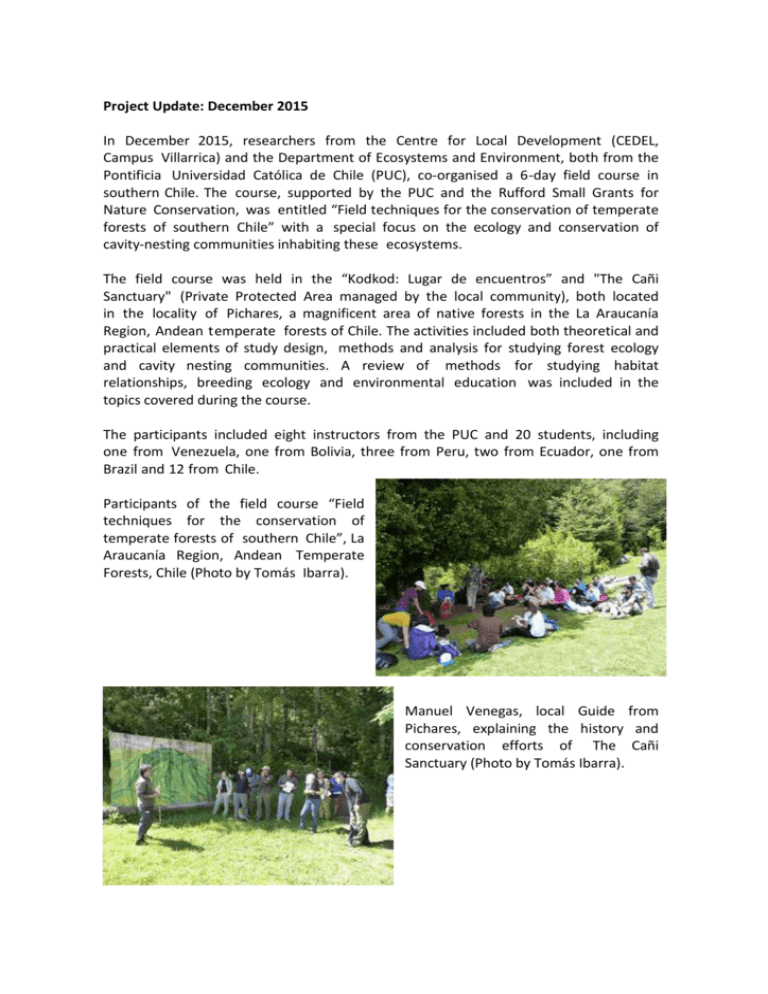January 2016
advertisement

Project Update: December 2015 In December 2015, researchers from the Centre for Local Development (CEDEL, Campus Villarrica) and the Department of Ecosystems and Environment, both from the Pontificia Universidad Católica de Chile (PUC), co-organised a 6-day field course in southern Chile. The course, supported by the PUC and the Rufford Small Grants for Nature Conservation, was entitled “Field techniques for the conservation of temperate forests of southern Chile” with a special focus on the ecology and conservation of cavity-nesting communities inhabiting these ecosystems. The field course was held in the “Kodkod: Lugar de encuentros” and "The Cañi Sanctuary" (Private Protected Area managed by the local community), both located in the locality of Pichares, a magnificent area of native forests in the La Araucanía Region, Andean temperate forests of Chile. The activities included both theoretical and practical elements of study design, methods and analysis for studying forest ecology and cavity nesting communities. A review of methods for studying habitat relationships, breeding ecology and environmental education was included in the topics covered during the course. The participants included eight instructors from the PUC and 20 students, including one from Venezuela, one from Bolivia, three from Peru, two from Ecuador, one from Brazil and 12 from Chile. Participants of the field course “Field techniques for the conservation of temperate forests of southern Chile”, La Araucanía Region, Andean Temperate Forests, Chile (Photo by Tomás Ibarra). Manuel Venegas, local Guide from Pichares, explaining the history and conservation efforts of The Cañi Sanctuary (Photo by Tomás Ibarra). Practical activity: Avian point counts were conducted during early morning (6:30 to 9 am) across a gradient of early successional, mid-successional and oldgrowth forests. Practical activity: Students and researchers checking a nest of whitethroated tree runner located in an excavated cavity in a dead-standing tree. For this, a peeper camera deployed on top of a pole was set up.











